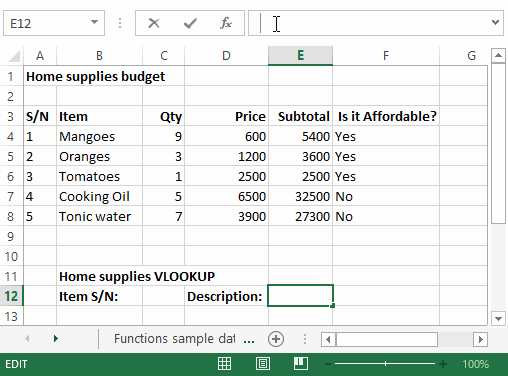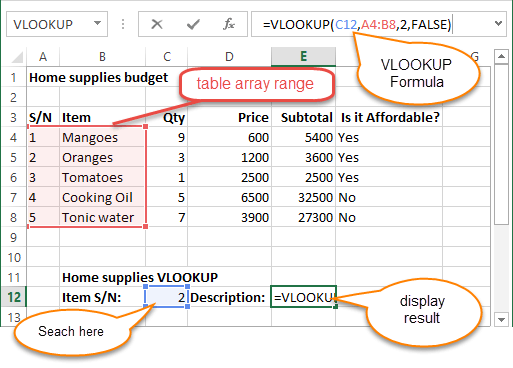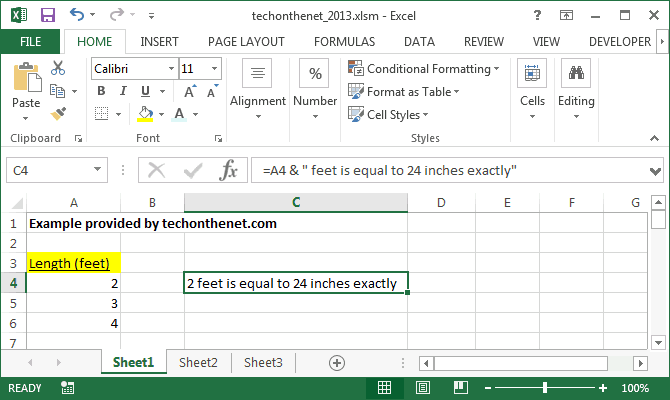The Definitive Guide to Vlookup Excel
By pressing ctrl+shift+center, this will determine and also return value from multiple ranges, instead of simply individual cells contributed to or multiplied by one an additional. Calculating the amount, item, or ratio of private cells is very easy-- simply make use of the =SUM formula as well as go into the cells, values, or series of cells you intend to carry out that arithmetic on.
If you're wanting to discover complete sales earnings from numerous marketed systems, for instance, the range formula in Excel is perfect for you. Here's exactly how you would certainly do it: To begin utilizing the selection formula, kind "=SUM," and also in parentheses, get in the initial of 2 (or 3, or 4) arrays of cells you want to increase together.
This stands for reproduction. Following this asterisk, enter your second variety of cells. You'll be increasing this 2nd array of cells by the very first. Your development in this formula should now resemble this: =SUM(C 2: C 5 * D 2:D 5) Ready to press Get in? Not so quick ... Since this formula is so complex, Excel reserves a different key-board command for selections.
This will identify your formula as a selection, covering your formula in support personalities and also successfully returning your product of both varieties integrated. In revenue estimations, this can reduce your time as well as effort dramatically. See the last formula in the screenshot over. The COUNT formula in Excel is represented =COUNT(Begin Cell: End Cell).
For example, if there are 8 cells with gone into worths between A 1 and also A 10, =COUNT(A 1: A 10) will return a worth of 8. The MATTER formula in Excel is specifically valuable for big spread sheets, where you wish to see just how several cells consist of real access. Do not be misleaded: This formula won't do any kind of mathematics on the values of the cells themselves.
The Only Guide to Excel If Formula
Using the formula in bold above, you can easily run a count of active cells in your spread sheet. The result will look a little something such as this: To perform the ordinary formula in Excel, get in the worths, cells, or variety of cells of which you're calculating the standard in the style, =STANDARD(number 1, number 2, etc.) or =STANDARD(Beginning Value: End Worth).
Discovering the standard of a variety of cells in Excel keeps you from needing to discover specific sums and after that performing a different division equation on your total amount. Using =STANDARD as your preliminary text entrance, you can let Excel do all the help you. For recommendation, the average of a group of numbers is equivalent to the amount of those numbers, divided by the number of things because group.
This will certainly return the sum of the worths within a desired variety of cells that all satisfy one criterion. For instance, =SUMIF(C 3: C 12,"> 70,000") would certainly return the sum of worths between cells C 3 and C 12 from just the cells that are more than 70,000. Allow's say you wish to determine the earnings you produced from a list of leads that are connected with certain location codes, or compute the sum of specific workers' incomes-- but only if they fall above a particular quantity.
With the SUMIF function, it doesn't have to be-- you can quickly include up the amount of cells that meet specific criteria, like in the wage example over. The formula: =SUMIF(array, criteria, [sum_range] Range: The variety that is being checked utilizing your criteria. Criteria: The requirements that figure out which cells in Criteria_range 1 will certainly be added with each other [Sum_range]: An optional series of cells you're mosting likely to accumulate in enhancement to the first Variety entered.
In the example listed below, we wanted to determine the amount of the incomes that were more than $70,000. The SUMIF function added up the buck amounts that went beyond that number in the cells C 3 via C 12, with the formula =SUMIF(C 3: C 12,"> 70,000"). The TRIM formula in Excel is denoted =TRIM(text).


The smart Trick of Excel Shortcuts That Nobody is Discussing
As an example, if A 2 includes the name" Steve Peterson" with unwanted rooms prior to the initial name, =TRIM(A 2) would certainly return "Steve Peterson" with no spaces in a new cell. Email and also file sharing are fantastic tools in today's office. That is, till one of your associates sends you a worksheet with some actually cool spacing.
As opposed to fastidiously eliminating as well as adding rooms as needed, you can cleanse up any kind of uneven spacing using the TRIM feature, which is used to eliminate added areas from information (besides single areas between words). The formula: =TRIM(message). Text: The message or cell from which you intend to get rid of spaces.
To do so, we got in =TRIM("A 2") right into the Solution Bar, and replicated this for each name listed below it in a brand-new column beside the column with unwanted rooms. Below are a few other Excel formulas you may discover useful as your information management needs grow. Allow's claim you have a line of message within a cell that you intend to break down right into a couple of various sectors.
Function: Utilized to extract the initial X numbers or characters in a cell. The formula: =LEFT(message, number_of_characters) Text: The string that you want to draw out from. Number_of_characters: The number of characters that you want to draw out beginning from the left-most personality. In the instance below, we got in =LEFT(A 2,4) right into cell B 2, and also replicated it into B 3: B 6.

Objective: Utilized to draw out characters or numbers between based on position. The formula: =MID(text, start_position, number_of_characters) Text: The string that you desire to draw out from. Start_position: The placement in the string that you wish to start extracting from. For instance, the initial placement in the string is 1.

Everything about Excel If Formula
In this instance, we went into =MID(A 2,5,2) right into cell B 2, and duplicated it into B 3: B 6. That enabled us to extract the 2 numbers starting in the 5th setting of the code. Objective: Utilized to draw out the last X numbers or personalities in a cell. The formula: =RIGHT(text, number_of_characters) Text: The string that you desire to remove from. excel formulas adding columns formulas for excel videos formulas excel soma